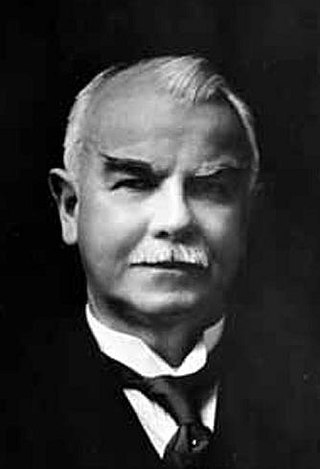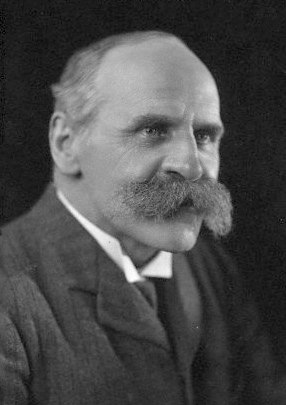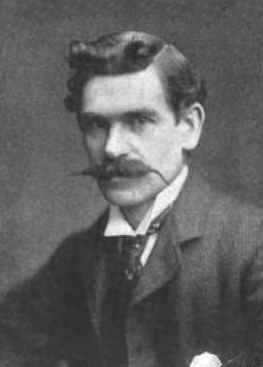
William John Macquorn Rankine was a Scottish mathematician and physicist. He was a founding contributor, with Rudolf Clausius and William Thomson, to the science of thermodynamics, particularly focusing on its First Law. He developed the Rankine scale, a Fahrenheit-based equivalent to the Celsius-based Kelvin scale of temperature.

Sir Alfred Fernandez Yarrow, 1st Baronet, was a British shipbuilder who started a shipbuilding dynasty, Yarrow Shipbuilders.

Robert Stevenson, FRSE, FGS, FRAS, FSA Scot, MWS was a Scottish civil engineer, and designer and builder of lighthouses. His works include the Bell Rock Lighthouse.

Sir James Alfred EwingMInstitCE was a Scottish physicist and engineer, best known for his work on the magnetic properties of metals and, in particular, for his discovery of, and coinage of the word, hysteresis.

John Scott Haldane was a British physician physiologist and philosopher famous for intrepid self-experimentation which led to many important discoveries about the human body and the nature of gases. He also experimented on his son, the celebrated and polymathic biologist J. B. S. Haldane, even when he was quite young. Haldane locked himself in sealed chambers breathing potentially lethal cocktails of gases while recording their effect on his mind and body.

Henry Dyer was a Scottish engineer who contributed much to founding Western-style technical education in Japan and Scottish-Japanese relations.

Brigadier-General Sir Alexander Gibb was a Scottish civil engineer. After serving as Civil Engineer-in-Chief to the Admiralty and Director-General of Civil Engineering at the Ministry of Transport, he established the engineering consultancy firm Sir Alexander Gibb & Partners.
Archibald Richard Burdon Haldane CBE was a Scottish social historian and writer.
Sir William Stowell Haldane WS was a Scottish civil servant who was Crown Agent for Scotland.

Allan Glen's School was, for most of its existence, a local authority, selective secondary school for boys in Glasgow, Scotland, charging nominal fees for tuition.
Events from the year 1811 in the United Kingdom. This is a census year and the start of the British Regency.

James Miller (1860–1947) was a Scottish architect, recognised for his commercial architecture in Glasgow and for his Scottish railway stations. Notable among these are the American-influenced Union Bank building at 110–20 St Vincent Street; his 1901–1905 extensions to Glasgow Central railway station; and Wemyss Bay railway station on the Firth of Clyde. His lengthy career resulted in a wide range of building types, and, with the assistance of skilled draughtsmen such as Richard M Gunn, he adapted his designs to changing tastes and new architectural materials and technologies.

The Institution of Engineers in Scotland (IES) is a multi-disciplinary professional body and learned society, founded in Scotland, for professional engineers in all disciplines and for those associated with or taking an interest in their work. Its main activities are an annual series of evening talks on engineering, open to all, and a range of school events aimed at encouraging young people to consider engineering careers. Between 1870 and 2020 the institution was known as the Institution of Engineers and Shipbuilders in Scotland (IESIS).
The Birthday Honours 1991 for the United Kingdom and the other Commonwealth realms of Antigua and Barbuda, Bahamas, Belize, Grenada, New Zealand, Saint Lucia, Saint Vincent and the Grenadines, Solomon Islands, Tuvalu, were announced on 14 June 1991, to celebrate the Queen's Official Birthday of 1991.
Queen's Birthday Honours are announced on or around the date of the Queen's Official Birthday in Australia, Canada, New Zealand and the United Kingdom. The dates vary, both from year to year and from country to country. All are published in supplements to the London Gazette and many are conferred by the monarch some time after the date of the announcement, particularly for those service people on active duty.
Queen's Birthday Honours are announced on or around the date of the Queen's Official Birthday in Australia, Canada, New Zealand and the United Kingdom. The dates vary, both from year to year and from country to country. All are published in supplements to the London Gazette and many are conferred by the monarch some time after the date of the announcement, particularly for those service people on active duty.
The Scottish Engineering Hall of Fame honours "those engineers from, or closely associated with, Scotland who have achieved, or deserve to achieve, greatness", as selected by an independent panel representing Scottish engineering institutions, academies, museums and archiving organisations.

George Oswald of Scotstoun (1735–1819) was a Scottish merchant of Glasgow. In 1797 he was elected Rector of the University of Glasgow.
The 1967 New Year Honours in New Zealand were appointments by Elizabeth II on the advice of the New Zealand government to various orders and honours to reward and highlight good works by New Zealanders. The awards celebrated the passing of 1966 and the beginning of 1967, and were announced on 1 January 1967.










